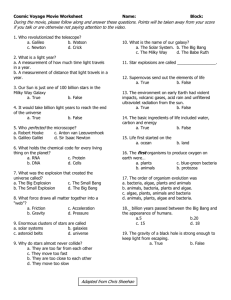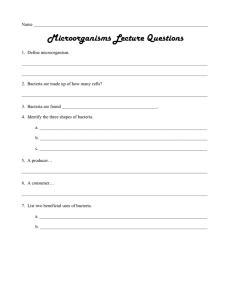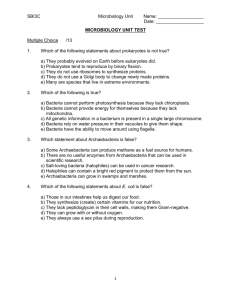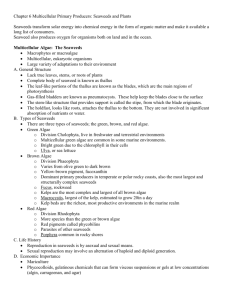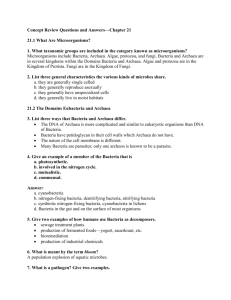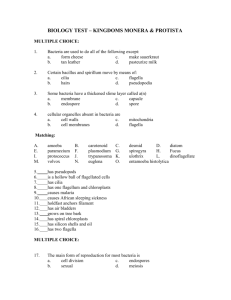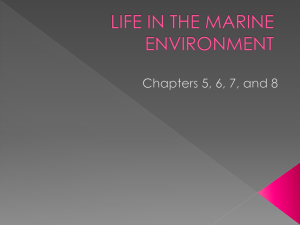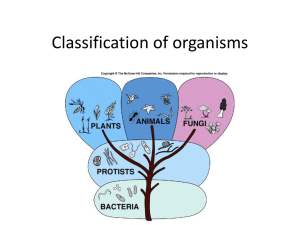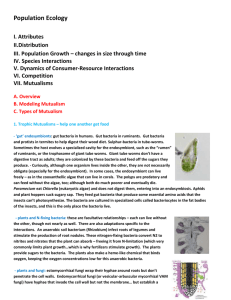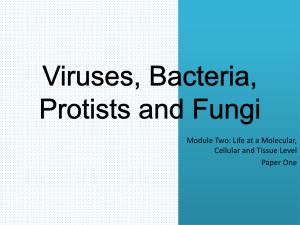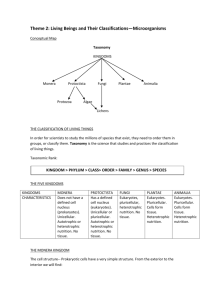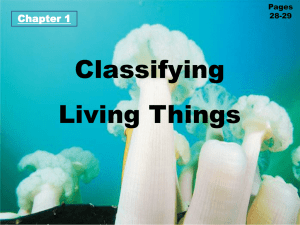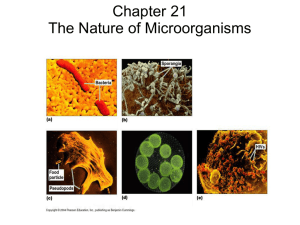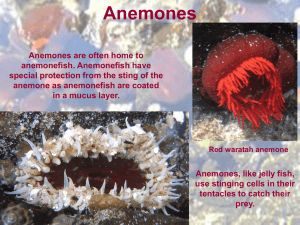Economic - Life Sciences 4 All
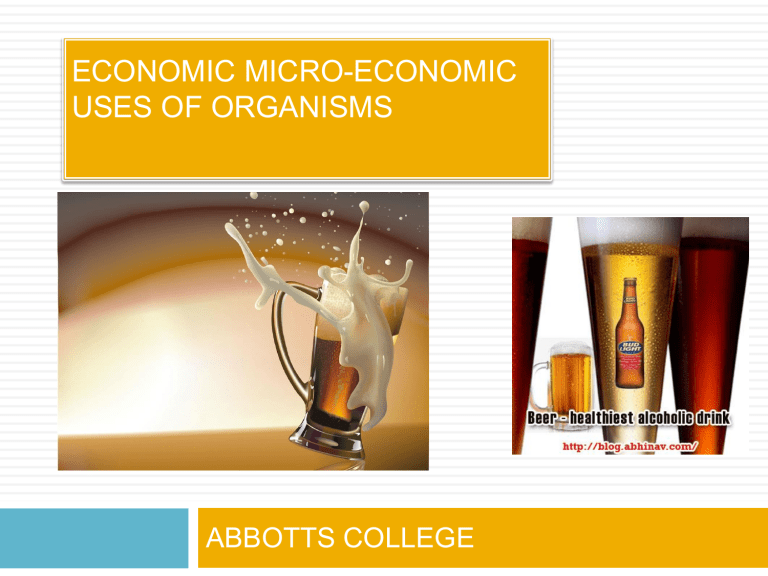
ECONOMIC MICRO-ECONOMIC
USES OF ORGANISMS
ABBOTTS COLLEGE
ECONOMIC USES OF BACTERIA PAGE 2.14
2
Degrade herbicides
Herbicides are chemicals which kill weeds
Bacteria clean contaminated groundwater
Neutralise toxic waste in soil
Eg oil and diesel
Synthesize riboflavin
One of the Vitamin B’s
3
ECONOMIC USES OF BACTERIA PAGE 2.14
4
Separate the fibres of jute, hemp and flax in the making of ropes an sacks
Hemp fibre
Flax
5
ECONOMIC USES OF
BACTERIA
Biological pest control
Eg control of moth caterpillars
Replace pesticides
Have no effects on humans and most other beneficial insects
PAGE 2.14
6
ECONOMIC USES OF
BACTERIA
Decompose sewage waste to harmless sludge
PAGE 2.14
7
8
ECONOMIC USES OF
BACTERIA
Food production
Eg making cheese
PAGE 2.14
9
10
ECONOMIC USES OF
BACTERIA
Make probiotics
Dietary supplements which contain beneficial bacteria that will assist digestion
Eg Lactobacillus and Bifido bacterium
PAGE 2.14
11
FOR REVISION
12
TEXTBOOK PAGE 2.14
LEARNING ACTIVITY 12: ECONOMIC USES OF
BACTERIA
13
ECONOMIC USES OF
ALGAE
Seaweed extracts include:
Phycocolloids found in algal cell walls have gelling properties
Used as gelling agents in food products eg instant puddings and also in cosmetics, medical drugs and insecticides
Thickening and stabilizing agents eg dairy products, artificial dairy toppings and canned pet food
To make agar plates used in laboratories for culturing bacteria
PAGE 2.14
agar plate
14
ECONOMIC USES OF
ALGAE
Seaweed extracts include:
Plant growth regulators which control growth and development of plants
Iodine from kelp can be included in mineral salt tablets
Natural pigments can be used as an alternative to chemical dyes and colouring agents
Nutrient extracts used in plant fertilizers
15
ECONOMIC USES OF
ALGAE
Some seaweed is cultivated as a crash crop
Eg Nori used in Sushi rolls
Excellent source of minerals and vitamins
Freshly harvested kelp is used to feed cultured abalone
Nutritional supplements can be made from cultivated algae abalone kelp
Nori
16
ECONOMIC USES OF
ALGAE
Diatomaceous earth
A fine sediment from the walls of dead diatoms
Used in toothpaste, sink cleaners and polishes with low abrasive properties
Crude oil and natural gas are the remnants of photosynthetic products of ancient algae
Oil producing algae are being grown as a potential alternative to fossil fuels
17
ECONOMIC USES OF
ALGAE
Seaweeds have the potential to contribute to sustainable employment opportunities and socioeconomic upliftment
South Africa has an advantage when it comes to the marketing of seaweed and its products because our coasts are pollution free and we have a high biodiversity of seaweeds
FOR REVISION
18
TEXTBOOK PAGE 2.15
LEARNING ACTIVITY 13:
ECONOMIC USES OF ALGAE
ECONOMIC USES OF FUNGI
19
As a direct food source eg mushrooms
For the production of biological products such as:
Alcohols
Plant growth regulators for plant and fruit development
Enzymes
Eg cellulases for industrial use and proteases – the active ingredient of detergents proteases
ECONOMIC USES OF FUNGI
20
To produce drugs
Eg antibiotics to fight bacterial and fungal diseases – penicillin
Penicillin is one of the most wellknown and widely used antibiotics
ECONOMIC USES OF FUNGI
21
To produce drugs
Drugs to control haemorrhage after birth eg ergometrine
Drugs to control colestrol levels and ward off coronary heart disease eg statins
ECONOMIC USES OF FUNGI
22
For fermentation processes
In the making of yoghurt, maas, bread, beer and wine
23
FOR REVISION
TEXTBOOK PAGE 2.16
LEARNING ACTIVITY 16:
ECONOMIC USES OF FUNGI
24
